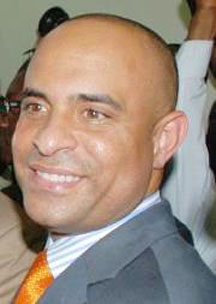PORT-AU-PRINCE, (Reuters) – Haiti is wooing Asian manufacturers, and its own diaspora, to inject investments and funds into the economy and create jobs to drive a recovery from last year’s earthquake, the foreign minister said on Thursday.

“Our focus right now is two things: foreign companies to come and invest and Haitians in the diaspora coming back to invest,” Laurent Lamothe, a former businessman who is now Haiti’s top diplomat, told Reuters in an interview.
President Michel Martelly, an extroverted former pop star elected in March, has declared the impoverished quake-scarred Caribbean nation “open for business” after Prime Minister Garry Conille’s cabinet including Lamothe was sworn in on Oct. 18.
One of Lamothe’s first overseas visits was to South Korea, where he discussed with the Asian nation’s leaders and business executives last week plans to create more than 40,000 jobs in Haiti next year through investments in industrial parks.
“We are looking at the apparel sector and technology sectors — for example, electric razors, putting together cell phones and things like that,” the foreign minister said, adding the projected investments in the parks totaled $224 million.
Lamothe said Haiti, whose capital and economic center Port-au-Prince was wrecked by the 2010 earthquake, could offer foreign apparel manufacturers and assembly industries proximity to the large U.S. market. It also enjoyed preferential access to the American market for garment exports.
“There are a lot of Asian companies, especially in the apparel manufacturing sector, that want to deliver goods quickly to the United States and the proximity we have to do this in a very short turn-around helps Haiti,” Lamothe said. Haiti is eligible for duty-free entry of textiles to the U.S. market, irrespective of the source of inputs, under U.S. legislation — the Caribbean Basin Trade Partnership Act, the Haitian Hemispheric Opportunity through Partnership Encouragement (HOPE) Act and the May 2010 Haitian Economic Lift Program (HELP) Act which expanded the Haitian garment quotas.
With support from the U.S. government and the Inter-American Development Bank, one of South Korea’s biggest garment manufacturers, Sae-A Trading Co Ltd, aims to initially invest more than $70 million in an industrial park in northern Haiti, creating up to 20,000 jobs.
Further investments in and around Port-au-Prince by other South Korean entrepreneurs are seen creating another 20,000 jobs next year, Haitian officials say.
“DIASPORA DOLLARS”
Lifting Haiti out of its status as the Western Hemisphere’s poorest nation is a priority for Martelly and prime minister Conille, a U.N. development expert who has announced ambitious plans to modernize infrastructure, establish rural and urban development zones and create 1.5 million jobs in five years.
Lamothe said Haiti was also looking to attract visits by Haitian exiles overseas — he said 4 million lived abroad — to bring funds into the nation of over 9 million people.
“There are 4 million Haitians living in the diaspora. For example, if you take 25 percent of that figure, if you have one million people coming here spending $100 per trip, that’s $100 million additionally in foreign direct investments,” he said.
“We want to route all the diaspora dollars into Haiti,” Lamothe said, underlining the Martelly’s government’s insistent message that it wants to draw a line under Haiti’s checkered past of violence, dictatorships, corruption and poverty.
